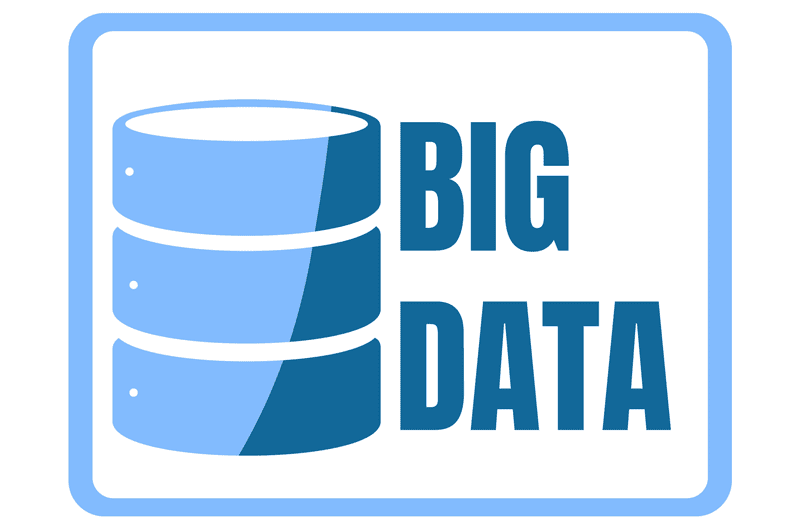Over the last several years there has been a digital transition taking place in industries across the board. The oil industry was no exception. It realized the positive impact that customizable software could have on operations and, after careful consideration, companies were following the trend toward profit and safety optimization. Through predictive analysis, big data, machine learning, artificial intelligence (AI) and the Internet of Things (IoT), the change has truly been revolutionary.
The transition is not simple by any stretch of the imagination. From major oil and gas corporations to minor EPCs, it’s quite the task to convert an entire operation to digital. Is it easy? No. Is it worth it? Absolutely. There are hiccups, of course, but the positive vastly outweighs the negative. Gradually, companies started to try it and find the best fit for their operation. Something that may have worked for them five years ago may be outdated now and something more innovative may make more sense at this time. The software market, much like the oil market, is always evolving and new players are always entering the game.
In our normal, everyday life, it’s just a matter of figuring out what works and what doesn’t. But it’s 2020 and this isn’t our normal, everyday life anymore. The pandemic changed everything, for everyone; that’s a given. No person or company was untouched by the effect of it and everyone had to figure out how to limit or completely eliminate human interaction for an indefinite amount of time. It was a panicked rat race to figure out how to completely rely on technology and machines to continue to remain in operation.
According to a new EY survey, the 2020 Oil and Gas Digital Transformation and the Workforce Survey, 90 percent of oil and gas executives agree that investment in technology and workforce is essential to surviving current market conditions. In fact, 58 percent said the COVID-19 pandemic has made investing in digital technology more urgent, with a majority (51 percent) planning to invest a moderate amount and a further 29 percent planning to invest a great deal relative to their total budget.
“The COVID-19 pandemic has accelerated the timeline for some digital technology adoption from five years to three months,” says Andy Brogan, EY Global Oil and Gas Leader. “The cost savings digital can deliver are critical for survival in today’s low-price environment, as oil and gas companies look to gain greater operational efficiencies and drive productivity across the value chain. However, to capture the full value of these investments, oil and gas companies need the skills to harness and use the technology to its maximum potential.”
According to the survey, nearly half (46 percent) of companies, on average, do not have the skills within their current workforce to realize the investment on their adopted technologies. Companies recognize a lack of maturity in many skills around digital technologies they have deemed as critical – on average, the gap between importance and maturity is 36 percent. For instance, the increasing availability of data analytics and insights was cited by 43 percent of executives as one of the top three trends that will positively impact their company’s business growth in the next three years. Yet, the gap between strategic importance and maturity of key skills was one of the widest on data analytics at 59 percent.
“The sector is now in a critical period in which the role of technology will only accelerate, the volume of data will only grow, and competition for talent will only increase,” says Tim Haskell, U.S. Oil and Gas People Advisory Services Leader, Ernst & Young LLP (EY U.S.). “The challenge for oil and gas is immediate. It’s not enough for companies to simply spend more on technology. Investment in the workforce is needed to scale and integrate technologies and ultimately capture the intended value. Companies must find an investment balance while addressing market pressures. Otherwise, the industry will lose crucial years and potentially a generation of workers.”
Essentially, there are two problems here: One being a critical need for a rapid technological data transition and the other being a human technological transition. If employees aren’t trained and equipped with the knowledge of how the software or technology works, then it’s a useless tool to have and one that is being wasted. It’s critical, now more than ever, that employers prepare those that work for them with the skills needed to maximize their software assets.
There are many different oil specific jobs where big data and analytics are involved. OspreyData is a company that has brought together seasoned, veteran artificial lift experts to guide them in building their Production Intelligence solutions. It is a company that can effectively identify suboptimal conditions, failure root causes and optimization opportunities across mass amounts of historical data.
Its well data technology allows thousands of wells to be managed with ease and gives engineers, operators and techs a unified solution that enables them to see trends, find anomalies and fix problems quickly. By having this information available to them, it improves operations and raises profitability by leveraging the digital oilfield. I was in contact with Richard West, the vice president of sales for OspreyData, on its well data technology solutions.
Can the technology detect or prevent rod parting on conventional pumping units?
Detect – yes. Our dynacard descriptors can indicate a rod part based on dynacard shape. We also have models looking for changes in the other sensors, such as load, that can indicate friction or parted rod.
Prevent – that is up to the operator. As mentioned, we have models to detect friction, which could lead to a rod part in the future.
Can it show at what depth there is a hole in the tubing?
We have developed a “hole in tubing” model for rod pump during previous proofs of concept, but [we’re] not aware if it can show what depth.
For gas lift, we have developed an “apparent open valve” model. If a hole was present between two valves, the model could potentially flag there is a high injection point, indicating a potential hole.
Speaking to the Venkat, we can also develop a more sophisticated model using our transient model and history matching to indicate shallower holes in tubing.
Can it show rate of feed in the wellbore as to set intermittent timers on ESPs and conventional units?
When we do history matching and optimization models, we calculate the productivity index for the well which is essentially the “rate of feed.”
ESPs are designed for a high rate and are expensive. Operators like to keep them running and not turn them on and off all the time. Having said that, our pump performance curves can indicate if not enough fluid is entering the pump and is in a down thrust position. If that is the case, it’s time to downsize the pump or, in this case, put it on an intermittent schedule.
For a conventional rod pump unit, we don’t necessarily calculate feed rate, but we measure pump fillage and pump speed. These measurements can be used to guide someone setting off their pump controller.
For intermittent plungers and gas lift wells, we can use indirect measurements and calculations like plunger velocities, load ratios and critical rates to help us determine optimum flow settings.
Can it detect pump failure before it happens on subsurface temperatures?
We have developed a pump failure detection model for rod pump and, similar to the rod part model, we have dynacard descriptors that can indicate potential failure. From what I can tell, none of our rod pump models incorporates temperature.
For ESPs, we have developed models such as gas in pump, and gas lock that can indicate a potential shutdown, which incorporate several sensors, including temperature.
OspreyData has developed solutions with data from thousands of wells from leading upstream companies and have worked to advance their machine learning capabilities, by listening to customers to build solutions that operators want. By doing this, they’re working with the people behind the scenes to ensure they have the knowledge to operate effectively and efficiently. They have a web-based tool called Production Intelligence Dashboard that features configurable dashboards, lift-specific visualizations, centralized file storage, and collaboration tools to access files and make comments. Because it is web-based, it can be accessed from anywhere.
From EY’s articles, “Technology can light the way, but do you know where you’re going?” and “Low prices and the COVID-19 demand slump make embracing and integrating technology a necessity,” the majority of their survey respondents’ key priority for investment in the value chain is operations. They are the main focus for companies in the industry because they represent the biggest cost center, and therefore a prime target for seeking efficiencies. The key attraction of digital technology for many oil and gas firms is the opportunity to scale back their reliance on costly and time-consuming manual operations. This is the area OspreyData is benefitting with its well technology.
Operations are beneficial, but a strategic approach is usually best when considering investment strategy in the value chain, since efforts at change often impact multiple areas of the business. Secondary priorities in the value chain are maintenance and reliability (25 percent) and logistics and supply chain (19 percent), but 96 percent of respondents are planning to invest in these two areas as well. Less attention is being paid to finance and human resources, though a majority said they would devote at least some capital to these areas.
Digital tools do more than enable communication and collaboration. They allow engineers and operators to plan and monitor operations remotely, automate manual tasks and streamline processes, and support operational integrity and process safety. Interestingly, the COVID-19 environment and resulting work-from-home policies have the potential to expedite some of the change necessary to support full integration of digital technology across an entire organization. Digital technology supports social distancing, allowing employees to work efficiently from remote locations, which will likely be a necessity throughout 2020 and beyond. The last several months have proven that oil and gas companies can operate successfully in digital platforms, supported by cloud computing.
A company’s biggest assets are its people and its technology, and the two need to work together like a well-oiled machine to adapt to the time we’re in right now. The greatest facility and product in the world are no good if they aren’t being run at maximum efficiency. Companies need to invest in the training of their people to properly utilize their technology investment. We need these skills now more than ever because, at this point, technology needs to do what some people aren’t capable of doing and we need capable people to run these operations, most of them remotely.
Whether wells are operating and being monitored remotely, or it’s the accounts payable department, the machine never stops. To stay ahead of the game, competency is key and profitability and production will be maximized as long as companies bridge the gap and remain cognizant of the changing times.
Sarah Skinner is a graduate of Louisiana State University with a degree in English. She has been a technical writer and editor in the oil and gas industry for over ten years in Houston and in Louisiana. She currently works as a technical writer for a pre-cast concrete construction company in Louisiana that builds blast-proof buildings for petrochemical plants.






